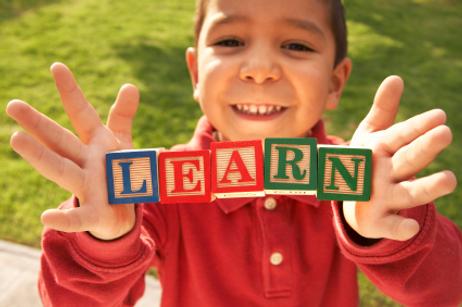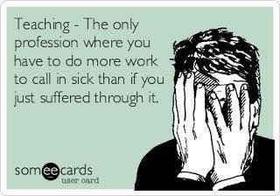Through educational research, today’s teachers know much more about learning styles than their predecessors. Subsequently, public schools are starting to create programs that accommodate different learning styles, with kinesthetic learning coming to the forefront.
Kinesthetic, derived from kinesthesia, refers to one’s movement sense. As a result, a kinesthetic learner is essentially a student who learns most effectively from movement-based or motion-oriented activities. According to experts, kinesthetic learners are typically identified as individuals who demonstrate excellence in areas of sports, dancing, hands-on tasks, physical activities, and motor skills.
Due to their unique activity-based learning style, many kinesthetic learners often struggle to remain motionless in a quiet and still classroom. As a result, public school leaders are seeking to implement new and innovative kinesthetic lesson plans.
This TED Talk describes kinesthetic learning.
The Signs and Unique Needs of Kinesthetic Learners
According to experts, every child tends to exhibit a certain form of “learning style.” For example, some students are auditory learners, wherein these types of children learn best from oral instructions and verbal commands. Other students are visual learners, who encounter the greatest benefits from pictures, charts, or other forms of sight-based structures.
Among the most common type of learning styles among younger children, however, is the kinesthetic style. As kinesthetic learners demonstrate an aptitude for movement-based activities, many children who fall into the kinesthetic category struggle to adhere to the routine and movement-free norms of a typical classroom. As DIR Journal Guides further explains, “People with kinesthetic intelligence behave differently to those that completely follow the norms set by society…They have plenty of physical energy and love physical movement... They cannot stay still for long and are often described as being ‘on the go.’”
Adding to these factors, kinesthetic learners also tend to enjoy outdoor activities, demonstrate a desire to figure out problems without instructions, and also may show common habits of squirming, fidgeting, or restlessness.
Children and adults who are kinesthetic tend to describe that their minds work more effectively when they are engaged in physical activity. Furthermore, popular writers, artists, musicians, and other scholastic role models are often celebrated for their high levels of kinesthetic intelligence, as kinesthetic learning allows an individual to explore their own questions and answers without a specific pre-planned format.
Because so many children naturally learn through the process of “doing” and not “hearing,” the archaic methods of lecture-based lessons are being slowly left behind. To accommodate the popular kinesthetic learning styles of young students, public schools are offering new programs and opportunities.
Kinesthetic Programs for Public School Students
According to the Center for Kinesthetic Education (CKE), students who show strong signs of kinesthetic needs often benefit from dynamic learning activities. Dynamic learning activities are engaging plans that allow students to focus their energy, optimize their studying and learning capacities, and use creative arts and motions to create strategies and solve problems.
While many adults have the tendency to reprimand children for their motion-oriented behaviors and fidgety actions, experts want to guide adults to a new understanding of active and energized children; instead of punishing children who struggle to sit still and remain silent, supporters of kinesthetic learning methods want to provide students with the tools and opportunities to develop students’ thinking and development.
Using unique, engaging, expressive, and explorative classroom activities, kinesthetic learners can use their own hands and abilities to enhance their comprehension of increasingly complex ideas. In fact, as the CKE asserts, teachers who refuse to create activities that allow for motion create an imbalanced instructional style: “Expecting (kinesthetic students) to sit quietly for long and listen to something without experiencing it physically is unrealistic.”
This video shows learning in a kinesthetic classroom.
How Parents of Kinesthetic Children Can Become Involved
While each local public school has its own programs to accommodate the needs of kinesthetic learners, parents should meet with their child’s teacher to find out what plans may be enacted in his or her classroom. Prior to meeting with a child’s teacher, parents can learn more about specific kinesthetic learning activities recommended by experts in the educational field. For example, in her book Minds in Motion: A Kinesthetic Approach to Teaching Elementary Curriculum, author and educator Susan Griss outlines specific techniques for enhancing kinesthetic learning opportunities. According to Griss’ examples, parents can be prepared to ask their child’s teacher kinesthetic-focused questions such as:
- How do you incorporate movement and motion into the class’ daily routines?
- What subjects or activities are often motionless?
- How do you help kinesthetic students remain seated during a non-kinesthetic activity?
- What objectives do you set for your kinesthetic lesson plans?
- How do you encourage kinesthetic learners?
By actively seeking out information from a child’s teacher, parents can establish a stronger understanding of the methods used for their child’s school instruction. As a result, if a kinesthetic child is struggling, parents can more actively assess their child’s developmental needs. By meeting with a child’s teacher early in the school year, parents, teachers, and children can have a more comprehensive idea of the optimal strategies and plans at hand.
Questions? Contact us on Facebook @publicschoolreview.













